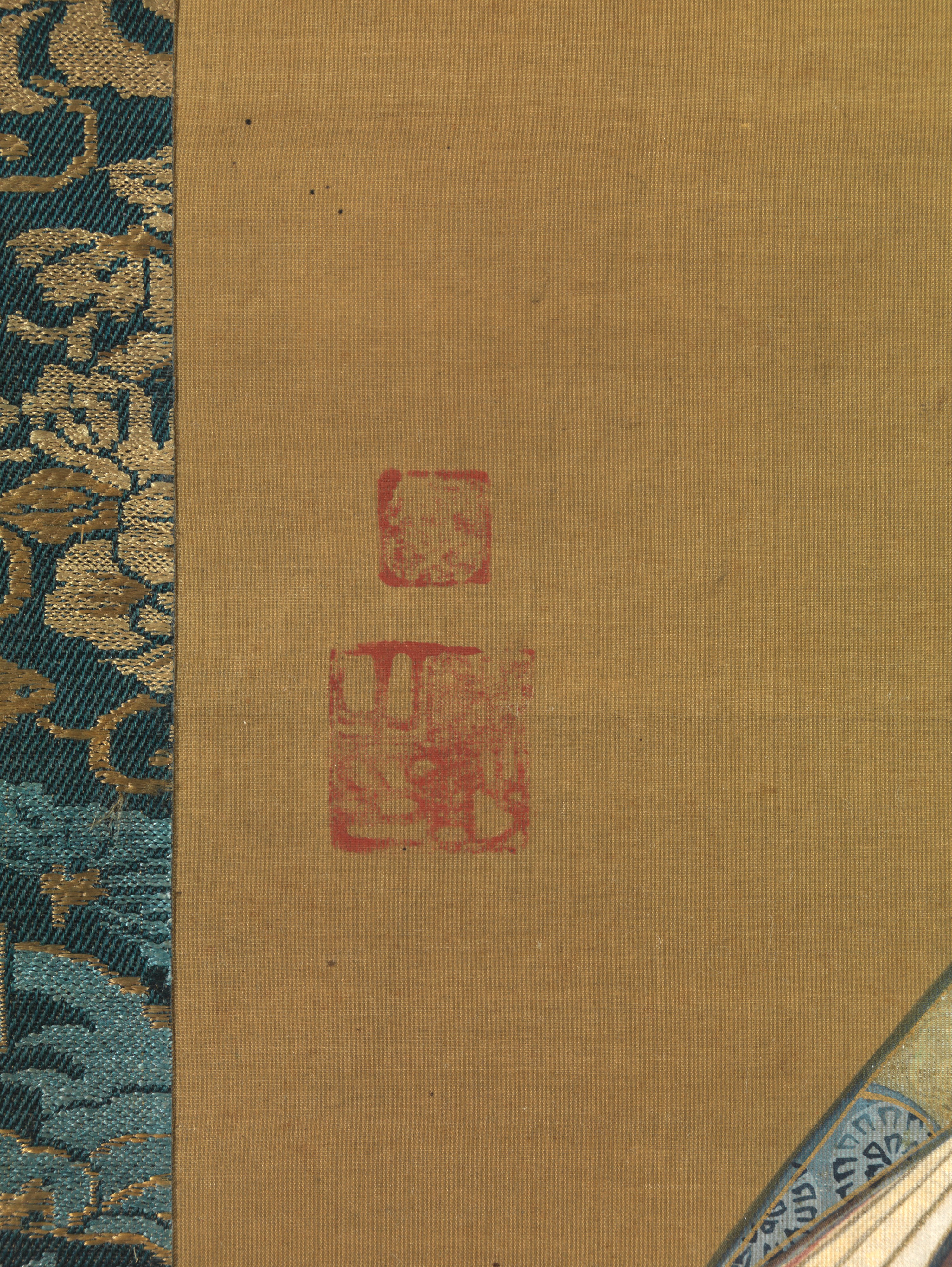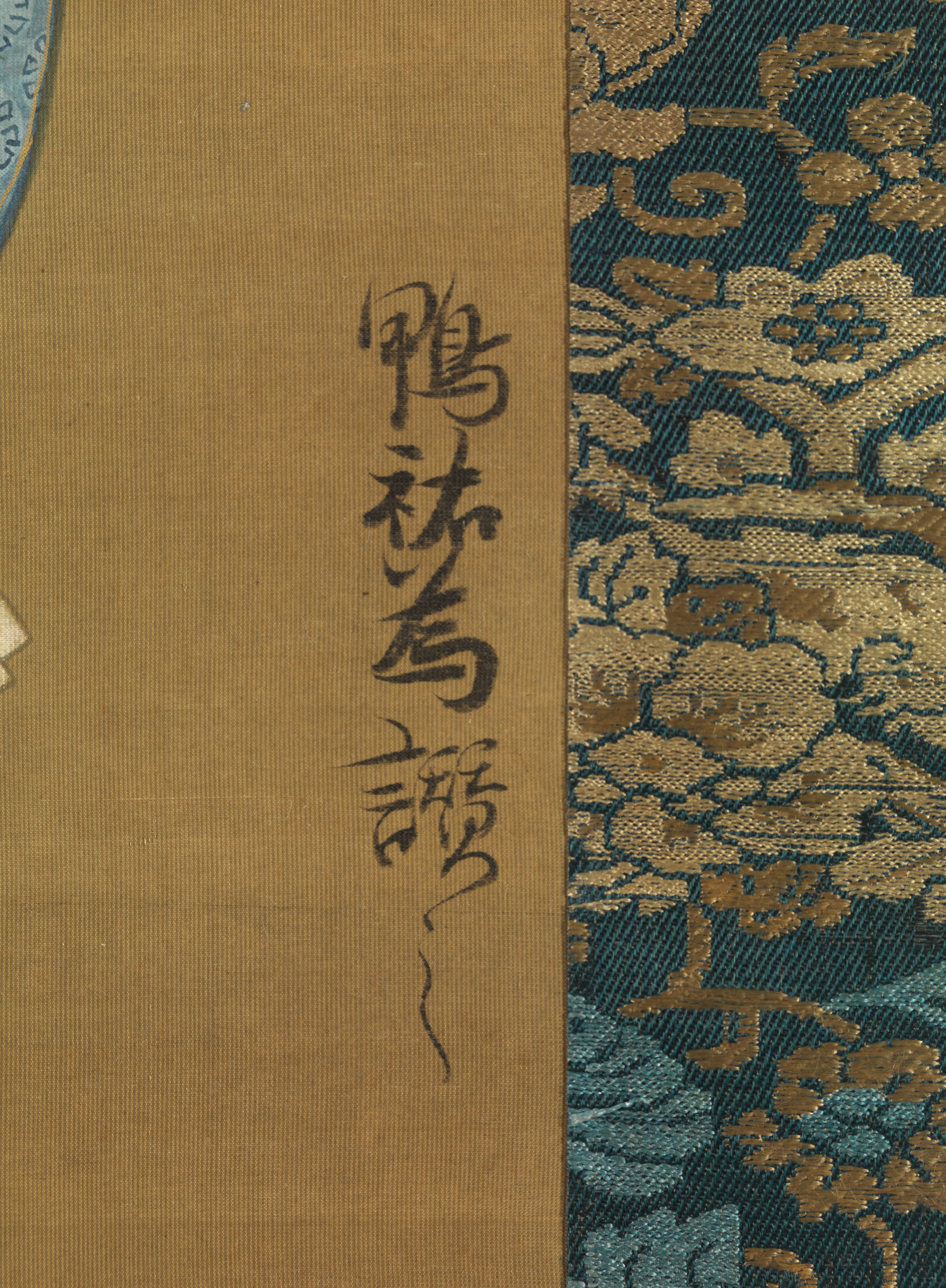Standing Courtesan
Tōsendō Rifū Japanese
Inscribed by Kamo no Suketame Japanese
Not on view
The artist has captured the elegant appearance of a woman, probably a high-ranked courtesan, in elegant robes and long, flowing hair tied with paper ribbons. Tōsendō Rifu was among the specialist ukiyo-e painters who emerged from the Kaigetsudō studio and emulated its style of rendering beauties of the pleasure quarter. The painting has an inscription, added after the painting was created, by Kamo no Suketame, a Shinto priest and noted poet of a generation or two after the artist was active. His gentle, curvilinear calligraphy reflects the influence of the prevalent Reizei courtly style of the Edo period. It was a common practice for owners of paintings to ask prominent literati of their day to inscribe a painting in a distinctive hand in order to add another level of enjoyment to the work. Here the inscription reads:
Sanagara ni
mono ii emeru
sugata-e no
fude no nioi mo
tare ka shinobamu
The flavor and fragrance
of the brush that created
this portrait, seeming so real,
as if she can speak and smile,
makes me long to know her.
—Poem by Kamo no Suketame
(Trans. John T. Carpenter)
This image cannot be enlarged, viewed at full screen, or downloaded.
This artwork is meant to be viewed from right to left. Scroll left to view more.





